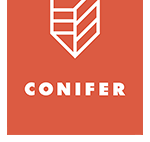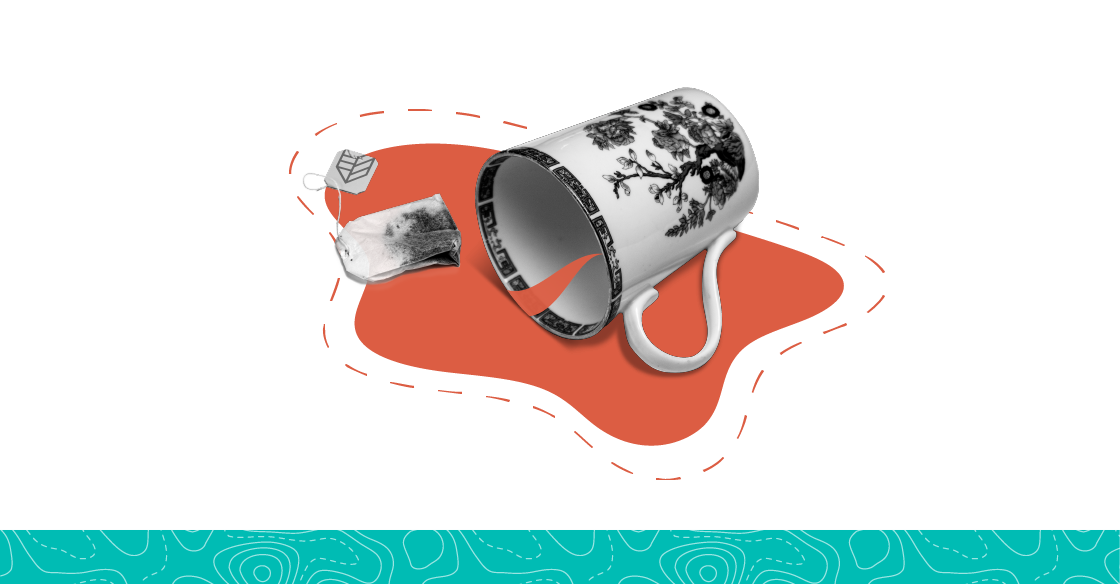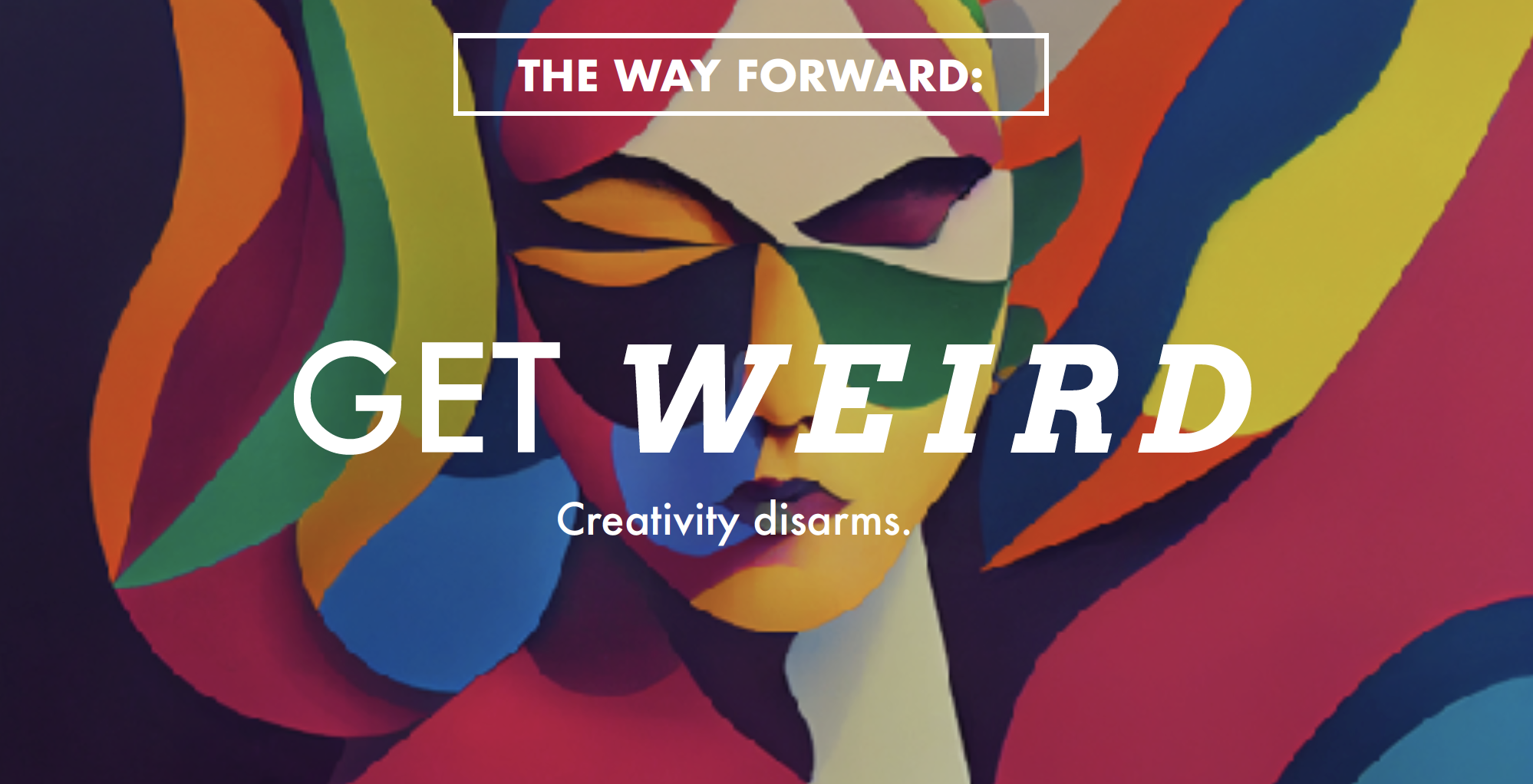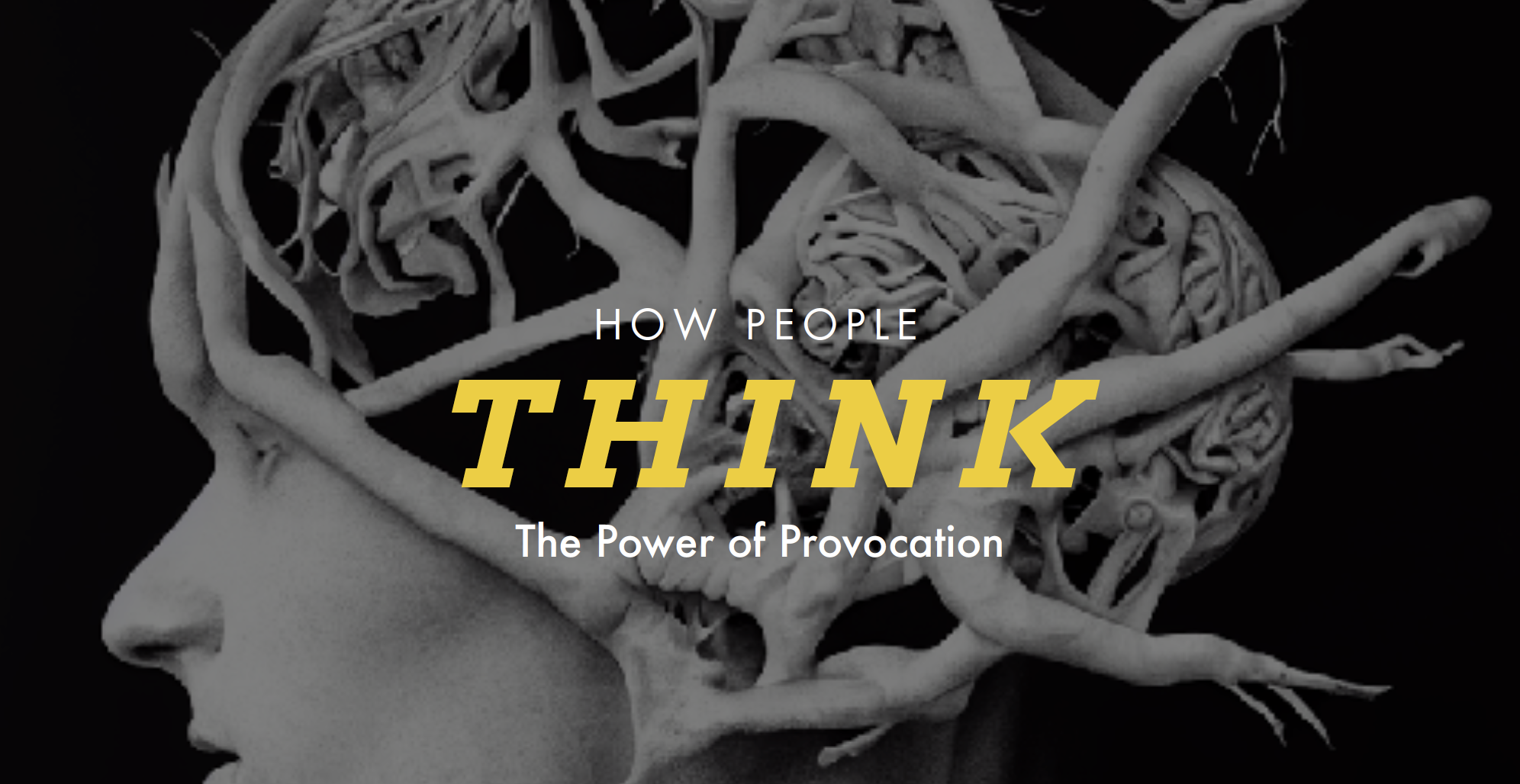
The Modern Shape of Research: Non-traditional Research Methods To Spark Creativity

Turn signals allow people inside metal machines to communicate their intentions to other people outside of their metal machines. Automobile designers realized, after one year of mass production, that a car stopped in the middle of the road conveys no intended action whatsoever. They invented a blinky light and promptly resolved the issue. Kind of. They resolved all of the issues except for the unpredictability of humans.
Still, recent studies have shown that failure to USE turn signals account for over 2 million car accidents annually. We have the tools. We have the means of communication. What we lack, as humans, is the ability to express what's happening inside our heads consistently and effectively.
This exact human-centric limitation of expression permeates everything we do. When studying people, a high degree of unpredictability in behavior should always be assumed. So, then, how do we obtain accurate and actionable information?
People. Are. Weird. This is a universal truth — even in the most mundane of tasks, you will find behaviors and habits that defy all odds and logic. The best research teams get creative to face unpredictability head-on. This is Conifer’s sweet spot: studying problems from multiple perspectives at the intersection of design, psychology, statistics, and anthropology. Blending these disciplines requires innovative and creative research approaches.
To truly understand human behavior, researchers must first get comfortable with the idea of being unconventional. Embracing non-traditional, creative strategies that capture the essence of our weird and wonderful ways is mission number one for complex investigations into behavior and belief systems. Without further ado, let’s dive into the exciting world of non-traditional market research techniques.
The Gambler’s Fallacy Persists
“I like to play blackjack. I'm not addicted to gambling. I'm addicted to sitting in a semicircle.” - Mitch Hedberg
Even the most savvy gambler falls into the trap of thinking they can outwit the house, outplay chance and probability, or use past events to predict their future success. Studying human behavior is a risk not unlike roulette. Trying to use legacy data and numbers or past behaviors to predict future outcomes is like betting it all on 17 — once in a while, you might get lucky, but it doesn’t mean you’ve outsmarted the system!
Over-reliance on very traditional market research techniques (think: focus groups and CSAT surveys) to study people is becoming akin to a shot in the dark in our modern age. If you are truly trying to get to the bottom of how decisions are made, researchers must explore the real, daily irrationality and emotion of users. It’s only with a creative approach and innovative research designs that we can make studying human behavior less of a gamble.
1. Give Permission to Get Weird
While the concept of building rapport is not new, today rapport requires new levels of authenticity. Researchers have to set the stage and make space for authenticity in order to encourage respondents to be their most honest selves in all their weirdness. Brene Brown talks about the concept of Permission Slips, which is a great way of thinking about making explicit space for creative expression and authenticity.
Without permission and the right stage to be authentic, users might default to:
- Pleasing: Telling you what they think you want to hear
- Diluting: Revealing just enough to get by
- Filtering: Taking shortcuts or over-simplifying
- Dreaming: Projecting an aspirational view of themselves
2. Decision Archaeology: Excavating the Truth
Decoding behavior comes down to studying how people decide, think, react, and adapt. Understanding how people make decisions is a complex undertaking and requires researchers to explore the many facets of the decision-making process.
Some decisions are made painstakingly over months while others happen in the blink of an eye and barely register. When it comes to studying decision-making, we are studying things that are inherently invisible, making direct and explicit observations more challenging. Furthermore, there is no one single foolproof technique or formula for cracking the inner-dynamics of decision-making.
Rather than thinking one piece of empirical data will be the sole luminary, we can embrace a mix of creative research techniques to explore decision-logic. Blending qualitative research methods, such as ethnographic research, with advanced quantitative analysis is a powerful combination.
- Creative Qualitative research techniques embrace intentional redundancy and require a little patience in order to watch the hidden thinking patterns unfold. Repetition helps to shed light on the underlying logic and mental models behind decision moments, big and small. At Conifer, we utilize methods such as digital ethnography, deprivation, and ethnographic immersions, among others, to unearth insights into how people rationalize their actions, form unconscious habits, and adapt to disruption.
- Advanced Quantitative methods such as MaxDiff and Conjoint force users to make choices, allowing us to mimic fast-paced, real-life decisions and gain a statistical perspective on the value users place on different choices and provides us with the relative importance when making tradeoffs. These methods give us a clear ranking and prioritization of different combinations of attributes that yield the most appeal.
3. The Creative Power of Metaphors and Language
In many ways, language shapes our reality. To truly understand the meaning behind users' actions and motivations, we have to be hyper-aware of the language they use. Metaphors, references to popular culture, and personal anecdotes all act as hidden clues and valuable insights into a users' mental models and belief systems.
- Listen closely! When a user associates something or someone with a character from The Simpsons or a renowned piece of art, for example, it conveys meaning. If a user relates a brand to a personal relationship (such as a best friend, a boyfriend, or a cool aunt) or a character reference, it narrates a story about brand equity. These everyday references form a central part of a user’s psyche that reveals how they think.
- Spill the Tea & Embrace Hyperbole! People LOVE to complain, but it’s not always where they start. Research studies inherently contain a power dynamic — participants want to please. Giving them explicit permission to let loose and enthusiastically love or hate something can really help you get past rote responses and crack authenticity wide open. This twist of inviting the absurd and overly expressive paves the way for investigating the semiotics that influence decisions, behaviors, and relationships.
4. Creative Interventions & Provocations
Sometimes, revealing inner thought processes requires a bit of provocation. Provocations come in many forms. Creative prompts or ice breakers used in an ideation workshop are a great way to get people talking, but they also reveal a lot about how people think. We rarely stop to think about these exercises as key data points. A provocation can also set the scene for a scenario or topic that would never come up organically in a typical interview but is essential to the research objectives at hand. Provocations can be really helpful curveballs that force users to apply their mental models to new topics or trains of thought and rationalize and describe their decisions in fundamental terms.
- Unboxing Schrödinger’s Cat: Adding a touch of mystery to the research process can amplify authentic responses. Unboxing is one of our favorite creative techniques for engaging users in new experiences. It helps us observe how users engage with uncertainty, anticipation, expectations, what cues they look for to assign meaning and value on their first impression, and ultimately, to see how products are accepted, integrated, or rejected into their worlds.
- Projecting Change through Deprivation: Humans are masterful adaptors. The way users adapt — during a deprivation exercise, for example — can tell us a lot about how they will react and adapt to future scenarios. Rarely can you learn more about a person than when they’ve had their world turned on its head.
Creativity Disarms
Non-traditional market research methods offer a rich and insightful approach to studying the complex world of human behavior and often deliver unexpected findings alongside actionable insights.
These methods discussed here aren’t just a good time, but rather they are a very intentional investigation strategy that drives incredible results. Traditional research garners traditional (and often predictable) results, often failing to push teams into new creative terrains needed to grow businesses and evolve products.
By embracing the weird, owning our role as decision archeologists, and leveraging the creative powers of metaphors and language in our research we can gain a deeper understanding of the invisible, weird, and wonderful forces that drive human actions and motivations.


